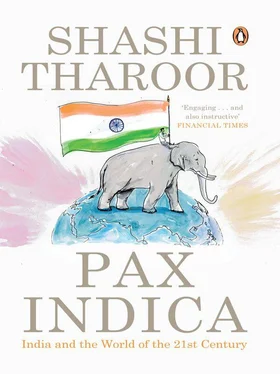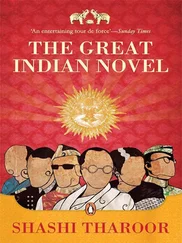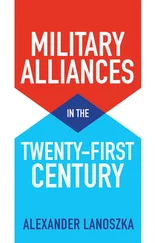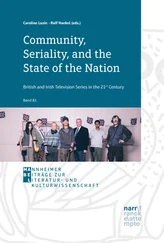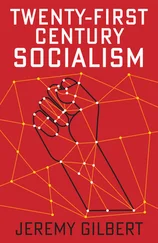Ironically we might have won much more praise for honestly justifying our foreign policy in more realistic terms. Non-alignment was both a way of safeguarding a sovereignty long fought for and recently won and a way of avoiding compromising it through the compulsions of bloc politics. Nonetheless India was much more open to the West in the early years than hindsight suggests; in many ways, though, it was driven away by Western condescension towards what the United States and the United Kingdom largely saw as Indian pretensions to an equality in world affairs that it did not deserve, and the West’s leanings towards Islamic Pakistan, seen as a doughty ally against godless communism. India’s domestic economic preference for a ‘socialist pattern of society’ with bureaucrats, rather than businessmen, on the ‘commanding heights’ of the Indian economy understandably found little favour in the West; the US Congress once passed a resolution refusing to help India construct a public-sector steel plant since it was ‘not the United States’ business to help build socialism in India’. The West was noticeably sympathetic to Pakistan over Kashmir, an issue on which India was supported by the Soviet Union, which frequently vetoed anti-Indian resolutions on the subject at the UN Security Council. This, coupled with Moscow’s eager bear hug, gave Indian non-alignment a distinctly pro-Soviet coloration over time, exemplified by the 1971 treaty of peace, friendship and cooperation that seemed to signal the death knell of India’s equidistance from the superpowers. That treaty was occasioned by the Bangladesh crisis, the largest refugee movement in human history (10 million Bengalis) flooding into India, and a sense in New Delhi of the inevitability of war to resolve it; the fear was of a possible two-front war with both China and Pakistan, which the treaty sought to dispel. India was thus using the USSR to forestall China, not the West. All this suggests a degree of compulsion about India’s basic choices; in a very fundamental sense, it was non-aligned because, in the global circumstances, it could be nothing else.
There are, of course, those who disagree with this view, and who suggest that alliance with the West from the very beginning might well have been a better choice, permitting India greater opportunities for higher-trajectory economic growth (à la South Korea or Thailand, which made such a choice) and global political influence. It would also have accorded with India’s position as a democracy, and placed New Delhi on the ‘winning side’ at the end of the Cold War. As a teenage supporter of the Swatantra Party, I was inclined towards this view myself, but found I was in a minuscule minority; there is no doubt that many of today’s advocates who critique Nehru for not taking the ‘winning side’ speak with the benefit of 20/20 hindsight. Barring very few (essentially the supporters of the Swatantra Party and some members of the Bharatiya Jana Sangh), pro-Western leanings found few adherents in postcolonial India: the overwhelming intellectual climate of the 1950s and 1960s was in favour of a Nehruvian vision of prudent equidistance. Of course, India’s contrasting stands in 1956 on the Suez crisis and the USSR’s invasion of Hungary exposed our non-alignment to be somewhat partisan, reflecting a leftward leaning that was a consequence of both our historical legacy and our need to put strategic daylight between ourselves and our former rulers. But non-alignment reflected a broad national consensus, and it is difficult to deny that the alternative of alignment with the West could have stunted India’s influence on the world stage, and its decades of leadership of the developing world, which gave it a stature that no mere subordinate ally of a superpower would have enjoyed.
There were concrete benefits too. On the basis of what was achieved in the first forty years after independence, it was possible for Indian foreign policy to use the favourable international situation after 1991 to take major steps in furthering our basic objectives. The reform and opening up of our economy that year coincided with the end of the bipolar Cold War world. In the following decade and a half, the world economy and world trade grew at a pace that was unprecedented in human history, creating favourable external conditions for India’s growth. And India was well placed to take advantage of the situation, thanks in no small part to a foreign policy which enabled us to work with all the major powers without exception — and to get help (if I may be allowed to mangle Marx) from each according to their capacity, to us according to our need.
This prompted an astute student of Indian foreign policy, the Canadian diplomat and scholar David Malone, whose 2011 book Does the Elephant Dance? Contemporary Indian Foreign Policy is perhaps the most impressive and substantial recent volume on the subject, to observe:
In stark contrast to the Nehruvian years during which India achieved considerable status in the international sphere with barely any achievements on the domestic front, chiefly by taking the moral high ground in foreign affairs, post-1990 India was no longer as convinced of its moral uniqueness and began to think of itself as a nation like several others in the quest of greater power. This favoured the normalization of traditionally antagonistic relationships with neighbouring countries, a greater commitment to international institutions that might legitimize its emerging power status, a positive approach to relations with the world’s remaining superpower, and, importantly, greater focus on national defence, including in the nuclear sphere.
The India of the second decade of the twenty-first century has made significant strides from the overestimated India of the 1950s and the underestimated India of the 1960s. Since 1947 it has raised literacy from 16 per cent to 74 per cent, reduced child mortality and increased life expectancy (from 26 to 72), and raised the rate of growth of the Indian economy from below 1 per cent to over 8 per cent, while reducing the percentage of the population living below the poverty line from some 90 per cent to just over 30 per cent. Foreign direct investment (FDI) into India is illustrative of our changing orientation to the world: from a cumulative total of $15.4 billion in the entire decade of the 1990s to $37.7 billion in 2009–10 alone (though this has since dropped). India’s share of global gross domestic product (GDP) has doubled from 2.5 per cent in 1980 to 5.5 per cent in 2010; its share in world merchandise exports increased from 0.4 per cent in 1980 to 1.5 per cent in 2010 and in world service exports from 0.7 per cent to 3.3 per cent. While figures do not always tell the complete story, the India that punched above its weight in the 1950s and below its undoubted potential in the 1960s is now poised to become the world’s third largest economy in purchasing power parity (PPP) terms in 2012, according to the IMF. It is a country whose real and visible weight counts in the world.
Our foreign policy today has also outgrown much of its earlier post-colonial rhetoric. In the past, India’s policy pronouncements on the world were often justified on the grounds that our position was right in principle rather than in practice, that they were correct more than they were useful. Foreign policy was seen by its practitioners, starting with Nehru, as an end in itself, unrelated to the more mundane economic needs of the nation. Today, India’s foreign policy is much more overtly focused on the task of facilitating India’s economic growth in order to bring our billion-strong masses into the twenty-first century. We are open about our need to cultivate good relations with countries that can assist us in that process — trading partners and investors in our economy; suppliers of energy resources and assurers of food security; and partners in our fundamental objective of keeping our people safe, secure and free to develop their human and economic potential without external interference or threats. We need to ensure reliable and multiple sources of these resources, predicated upon good relations with the countries that can provide them and a peaceful environment in which our development and growth can flourish. These are all pragmatic underpinnings of our foreign policy — one aiming to shore up the key domestic objective of transforming our own society and economy.
Читать дальше
